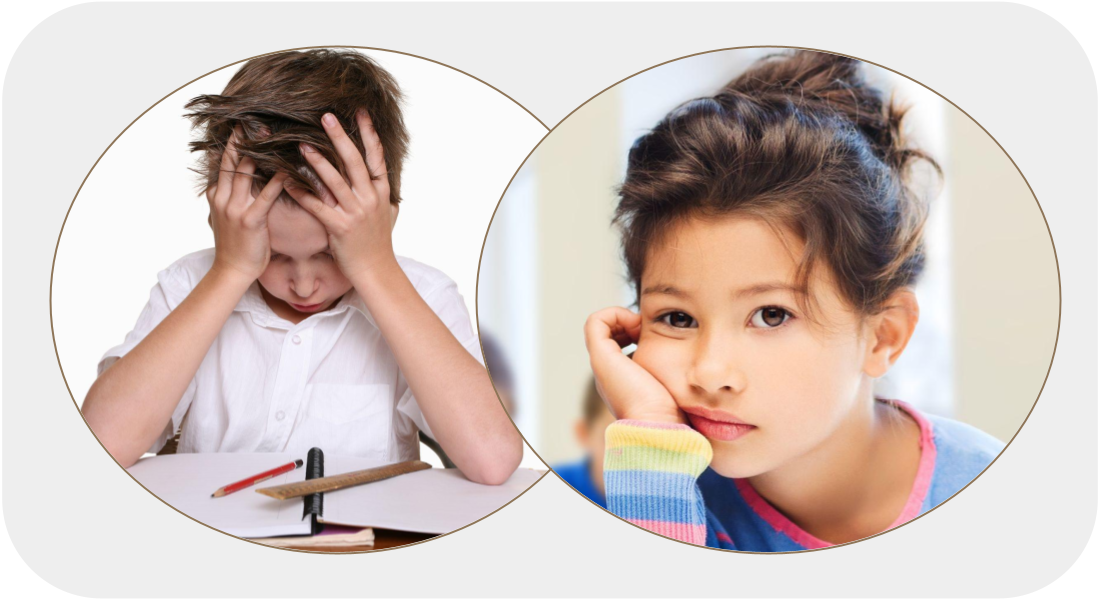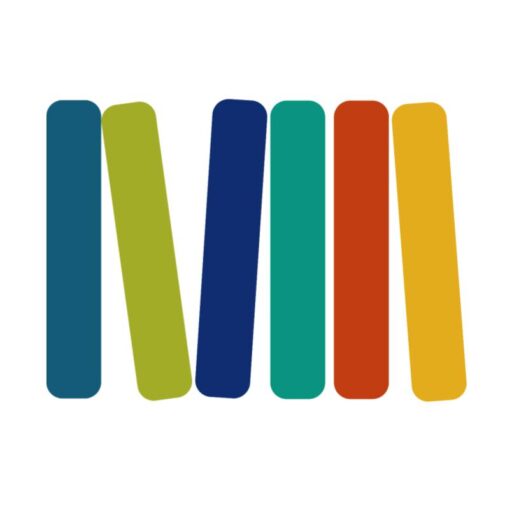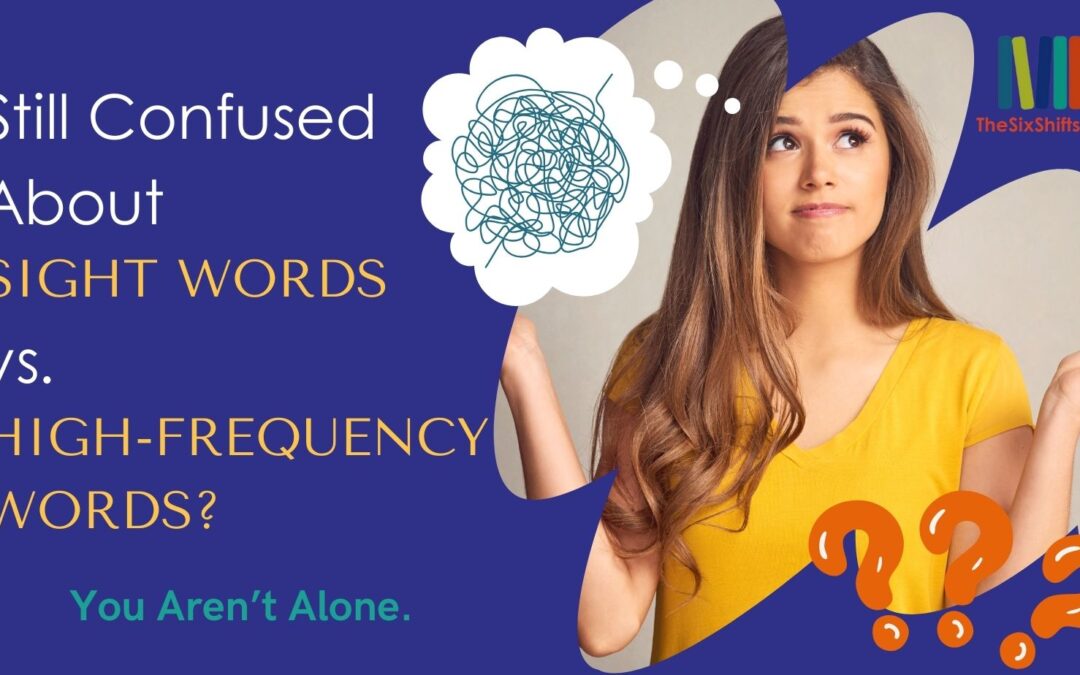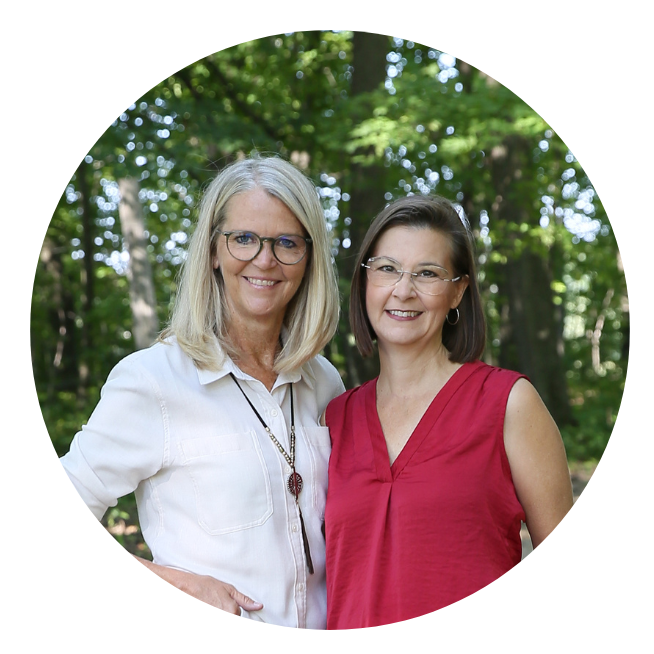Do We Really Have to Know the Difference Between Sight Words and High-Frequency Words?
If you’re like us, you’ve likely used these two terms—high-frequency words and sight words—interchangeably. But to really understand the brain science of word learning (for all words), it’s important to get clear on the difference between these two labels. Technically speaking, the terms high-frequency words and sight words are NOT synonyms, even though they get mixed up a lot and flip-flopped in conversation.
But as trivial as it might seem, knowing the difference really does make a difference as you work to help children become fluent word readers who comprehend deeply. So, today, we revisit these two kinds of words that continue to cause a bit of confusion in the world of literacy and try to clear up the confusion so you are even better equipped to help students get on the road to comprehension.
What Are High-Frequency Words?

Words that researchers have determined (through counting and calculation) to show up the most in running text are high-frequency words. Importantly, words get labeled high-frequency words based on the text, not the reader. High-frequency words show up frequently for every reader, regardless of how well the reader can read them.
Once you start noticing them, you discover that high-frequency words are the glue that holds every sentence together. And while there are frequency estimates for any word a student will encounter, the ones they will bump into the most, well, those are referred to as high-frequency words.
Taking a Closer Look at Some High-Frequency Words in Action
Consider the sentence below. Which words in this sentence are the most common, or highest frequency, words?
The mangy dog with the patchy fur loped along the fence.
As you likely figured out, the high-frequency words in the sentence above are the, with, and along. And did you notice the word the shows up three times in that one little sentence?! The little word the is actually the most frequently occurring of all the high-frequency words in written English. In fact, the shows up once in about every 20 (or more) words in written English. The words mangy and loped, on the other hand, are not high-frequency words. Both show up an average of once every 10,000 thousand words of written English, which means they are low-frequency words.
It’s pretty amazing to think about how much of what we read is really the same few words over and over and over (yes, over is a high-frequency word). In fact, just 13 words make up about 25% of what we read! If you’d like a list of the 109 highest-frequency words in all written English-–the words that show up the most whether you are reading a beginning reading text or a medical journal–you can download our 109 Power Words here.
Obviously, since readers will encounter many of these words every time they read connected text, it’s super important for their teachers to understand what they are and for students to learn to read them quickly, or they will struggle to get momentum along the path of a sentence, and comprehension will undoubtedly be compromised. In fact, high-frequency words have a lot more to do with comprehension than you might think, even though their meanings are typically vague and hard to pin down.
High Frequency Words are Uniquely Important for Comprehension
While high-frequency words are kind of like language VIPs because they show up frequently on the pages of written text, they are important for another reason, as well. They also serve as the linguistic glue that holds all the other words of a sentence together so that the sentence can actually make sense to the reader. So even though the meaning of high-frequency words is usually abstract (How do you define the high-frequency word the, anyway?), ironically, they are subtly essential for understanding what we read.
Imagine a reader trying to get some traction in a text without knowing how to read the ubiquitous high-frequency words like the, and, or of, which are scattered throughout the text’s landscape. High-frequency words can be a real deal breaker for a reader.
To illustrate this point, let’s revisit the sentence from above, this time without the high-frequency words:
Mangy dog patchy fur loped fence.
You can see that the sentence becomes much less comprehensible without the help of the high-frequency words, the, with, and along, to connect all the other words. So, as unassuming as they are, high-frequency words have a really important job, which is why they show up constantly across the landscape of text. They keep readers from getting lost as they log miles toward their destination of comprehension.
The significance of high-frequency words lies not just in their . . . well, frequency. Their importance, surprisingly, also rests in the essential contribution they make in helping readers construct meaning on the way to comprehension, building a mental model of the ideas and structures of the text as they travel along the words.
So, What are Sight Words Then?
Okay. As you now know, high-frequency words are the words that show up most frequently in written English and that also play a surprisingly pivotal role in the overall construction and comprehension of meaningful sentences.

Sight words, on the other hand, are ANY words that a reader’s brain has learned in a way—and stored in the brain in a place—that lets that reader recognize the word instantly (in less than half a second). You can think of sight words as something a word BECOMES, a status it EARNS when a reader takes true and complete ownership of it. When a word has become a sight word for a reader, it means the reader knows that word in a flash, without hesitation, and without effort.
Let’s go back to the word the. We know it’s a high-frequency word because the numbers prove it. But sight words aren’t designated by researchers who count them and analyze running text. Sight words are defined by whether an individual reader can read a word automatically or “on sight.” So we don’t know if the is a sight word unless we know how well an individual reader can read it. Even then, if the reader reads the word the automatically, we only know that it is a sight word for that one reader.
So, although we may WANT the word the to become a sight word for all of our students as quickly as possible, a particular word will reach sight status for different students at different times. This distinction means that the word the, even though it is a high-frequency word for all of your students, can be a sight word for some students while it is not yet a sight word for others.
Basically, high-frequency designations come from crunching numbers apart from the readers who will read them, while sight word status is specific to individual readers and the ease with which they recognize, articulate, and understand that word.
But there’s more.
While the highest-frequency words are some of the first words we hope will get this sight word status in students’ reading brains, lower- and even low-frequency words can eventually become sight words, too. For example, one of the first sight words that students typically acquire—their own names—is a low-frequency word. In fact, our names, Jan and Kari, are low-frequency words that show up in text about as often as the words mangy and loped.
Interestingly, high-frequency words are arguably just as important as their names when it comes to turning words into sight words, simply because high-frequency words show up so much. So, it’s not enough that readers can figure out high-frequency words as they move through a text. If they are going to comprehend what they are reading, they need to read all the words—especially the high-frequency words—quickly. This urgency means that many of the words in a text, especially the high-frequency words, need to eventually reach sight word status in order for readers to read them fluently while focusing their attention on meaning.
If readers have to do a lot of stopping and starting as they encounter high-frequency words, or if they frequently confuse one word with another (saying of for or, then for their), the journey through the text becomes bumpy and frustrating. These interruptions to momentum mean that, at best, readers build comprehension less efficiently. At worst, if too many high-frequency words in a text are stop lights, speed bumps, or even detours, readers become confused, discouraged, and even lost.
Why Do My Students Have So Much Trouble Turning High-Frequency Words into Sight Words?
We’ve all been there.
Because we’ve understood the importance of these pesky high-frequency words, we’ve made lists and flashcards and word walls of the ones we know are most important. We’ve taught and taught and taught the word of. We’ve had kids practice and practice it, and still, when they encounter the word in text (or go to write it in their journals), it’s as though they’ve never learned it at all!

So frustrating for us and for them! And so time-consuming!
What have we been missing or misunderstanding?
Unfortunately, in lots of classrooms and for lots of years, the kinds of instruction we’ve offered—with the best of intentions—to help children make high-frequency words their own have just plain missed the mark. The methods we’ve relied on to turn high-frequency words into sight words haven’t actually been that helpful and have likely made it harder—rather than easier—for high-frequency words to be able to join the sight word community.
But, by tuning into the brain science of word learning, we discover that making some simple but pivotal changes to our instructional approach can make a world of word-learning difference for our students.
So, How Can Teachers Help Readers Turn High-Frequency Words into Sight Words?
Well, let’s go back to the word “the.”
We know it’s a high-frequency word and that sight word status is awarded word-by-word, student-by-student. But how does it happen? What makes a word really stick in ways that allow instant, accurate, and automatic recall?
Well, for the word the—as well as for the 35,000-70,000 lower-frequency words that fluent readers (like you) can read in a flash—to reach that coveted sight word status, students must come to understand the connections between the word’s orthography (spelling), phonology (sounds), and meaning. They have to align and glue together the individual parts of these in order for their brains to store the words in the place that makes it easiest to retrieve them. So when a reader truly understands that:
- The spoken word the has two sounds /th/ /ŭ/.
- The first sound is spelled TH.
- The second sound is spelled E.
- TH and E are pronounced in the same order every single time the is spoken.
- The two sound-spellings, TH and E, are spelled the same way every single time it is written.
- Every single time I see these two sound spellings, and only these sound spellings, written in this order in a single word, it is always a spelling of the spoken word the.
- If I pronounce in order the sounds /th/ and /ŭ/ alone in a single word, I can recreate the spoken word the.
- The two sounds and the two sound spellings line up perfectly—their positionality matches one-for-one—every time we read or write the word.
These understandings about how a word works are all part of the alphabetic principle, which children must come to understand in order to read thousands of words automatically and comprehend well. The alphabetic principle involves knowing how the orthography (spelling), phonology (sounds), and meaning of a word are all glued together. When this happens, a word earns sight word status for a particular reader!
But There Are So Many High-Frequency Words (and Other Words) That Need to Reach Sight Word Status!
Yes, it’s true; readers have a lot of words to learn!
From the flashiest to the most mundane, eventual reading proficiency requires that pretty much all words become sight words. In fact, for those of us who’ve become successful readers, it’s estimated that 95% or more of the words we encounter in print have become sight words for us. And that is true whether they are high-frequency, low-frequency, or some frequency in-between.
But how in the world did we learn so many words?
The special brain learning process that can turn any word into a sight word involves connecting the word’s sounds, spellings, and meaning—all without having to spend time decoding. This process is called orthographic mapping, and there are some very specific teaching moves that increase the likelihood that orthographic mapping takes place in the brain.
But, still, we can’t teach 30,000–70,000 words one by one! And even if you narrow the list to focus on “just” a few hundred of the highest-frequency words, explicit teaching of each one word-by-word is an intense instructional commitment. Luckily, once you know the formula for supporting word learning through orthographic mapping, you can get even more selective about which words to teach explicitly. This often means that you will spend the most time teaching those words with unexpected sound-spellings.
The fact that many high-frequency words have totally and completely regular spellings (can, and, it, if, went, etc.) means that students can use their own decoding knowledge to put the wheels of orthographic knowledge in action.
For us, discovering what we’d been missing about high-frequency word instruction was eye-opening, heartbreaking, exciting, and motivating all at once. In fact, we became so consumed with really understanding and sharing how the brain best learns words that we dedicated a whole chapter to this topic in our K-2 book, Shifting the Balance: 6 Ways to Bring the Science of Reading into the Balanced Reading Classroom, AND we created a mini-course (with a set of engaging and ready-to-use classroom materials) to help teachers move from chanting letters and drilling flashcards to using instructional moves that are more brain-friendly for their students.
You can also figure out how to consistently leverage orthographic mapping while engaging all four parts of the language processing system (phonology, orthography, meaning, and context) on your own by using a simple lesson template like this free download, which we designed to support you in figuring out how to apply the ideas in this blog and in our book. And if you want a shortcut for getting to brain-friendly sight word instruction, you will probably find our two-hour, on-demand sight word class and our ready-to-use classroom materials helpful.
Now You Know the Overlap and the Difference Between High-Frequency Words and Sight Words
Here is a summary of what you now know about high-frequency words, sight words, and their relationship with each other:
- High-frequency words are words that show up frequently in text.
- High-frequency words act as the glue that holds the other words in sentences together. This role means they have a crucial impact on comprehension.
- Sight words are words that readers can read automatically. They do not have to decode these words.
- High-frequency words—the, said, and, can, etc.—become sight words once they’ve been learned through a brain process called orthographic mapping.
- All other words can (and most do) become sight words. Sight word status isn’t exclusively for those ever-important high-frequency words. Words that appear in text occasionally or even rarely—bellyflop, befuddle, Baltimore, burpee, etc.—can also reach sight word status as students become proficient readers.
- Whether high- or low-frequency, as soon as a word becomes a sight word, it makes an important contribution to reading (and writing) fluency. Fluency frees up the brain to focus on other things.
Every bit of increased fluency contributes to overall comprehension, which is always the destination in the first place.

Here’s to empowering readers as they turn high-frequency words (and low-frequency words) into sight words! We are excited about the ways you will use orthographic mapping to teach the alphabetic principle and make word learning easier for your students. We know that making their reading journey smooth and gratifying is a top priority for you.
Ready to Get Started TOMORROW With Powerful High-Frequency Word Instruction?
If you’re ready to dig deeper into the science of brain-friendly high-frequency word instruction—both the WHY and the HOW—we’ve created a mini-course and some ready-to-use classroom materials for you. Sight Word Success is a collection of these simple, ready-when-you-are tools that we designed to equip you with everything you need to make word reading instruction simpler and more successful for you and your students.




Hello Jan and Kari,
I found your article engaging and ready to share with colleagues. Thank you.
Valerie Hughes
So glad to hear it!
I appreciate this I’m so glad I stumbled upon your blog!
Glad to hear it, Paulette.